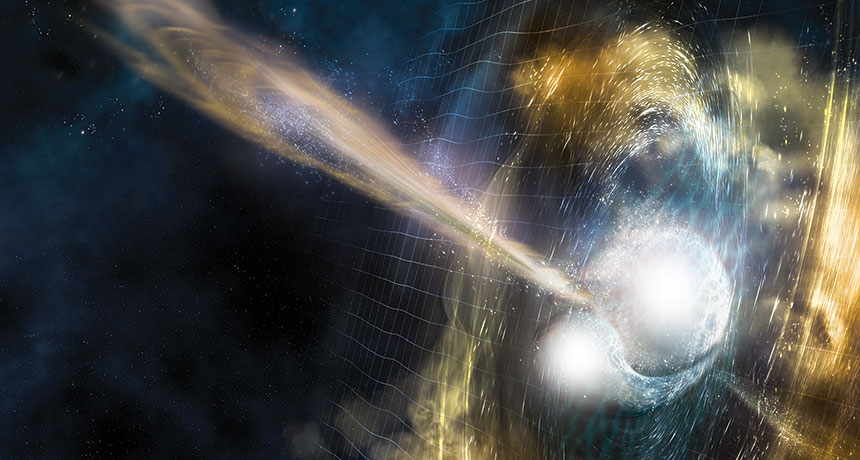This year’s neutron star collision unlocks cosmic mysteries
Discovery offers clues to heavy element formation, universe’s expansion and more

CRASH AND WAVE In a galaxy 130 million light-years away, two neutron stars collided. This year, in the first detection of its kind, observatories caught the resulting gravitational waves and light show (illustrated).
NSF, LIGO, Sonoma State Univ., A. Simonnet